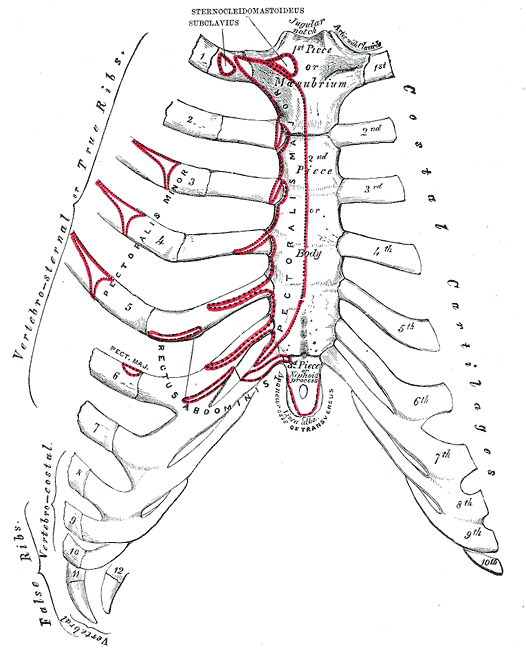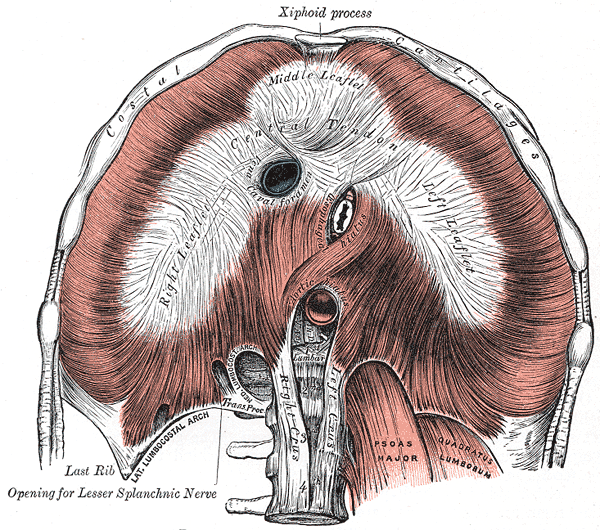Xiphoid process
Template:Infobox Bone Editor-In-Chief: C. Michael Gibson, M.S., M.D. [1]
Please Take Over This Page and Apply to be Editor-In-Chief for this topic: There can be one or more than one Editor-In-Chief. You may also apply to be an Associate Editor-In-Chief of one of the subtopics below. Please mail us [2] to indicate your interest in serving either as an Editor-In-Chief of the entire topic or as an Associate Editor-In-Chief for a subtopic. Please be sure to attach your CV and or biographical sketch.
The xiphoid process, also known as the xiphisternum is a small cartilaginous extension to the lower part of the sternum which is usually ossified in the adult human. Subxiphoid means to place a needle or transducer below the xiphoid process. By age 15 to 29, the xiphoid usually fuses to the body of the sternum with a fibrous joint. Unlike the synovial articulation of major joints, this is non movable. Much the way the first seven ribs articulate with the sternum, the cartilage in the solar plexus joins on the xiphoid process, reinforcing it, and indirectly attaches the costal cartilage to the sternum.
Bifurcation
The xiphoid process can be bifurcated, and sometimes perforated, naturally. These variances in morphology are inheritable, which can help group family members together when dealing with burial remains. These morphological differences pose no health risk, and are simply a difference in form.
Clinical significance
Pressure on the xiphoid process should be avoided when administering chest compressions in CPR, as this can cause the xiphoid process to break off and be driven into the heart lining and muscle, resulting in punctures or lacerations of the diaphragm.
Xiphoid process in birds
In birds, the xiphoid process is a long structure, often following the direction of the carina.
Etymology
The word derives from the Greek word xiphos for straight sword, the tip of which the process somewhat resembles.
Additional images
-
The human rib cage.
-
Anterior surface of sternum and costal cartilages.
-
The diaphragm. Under surface.


